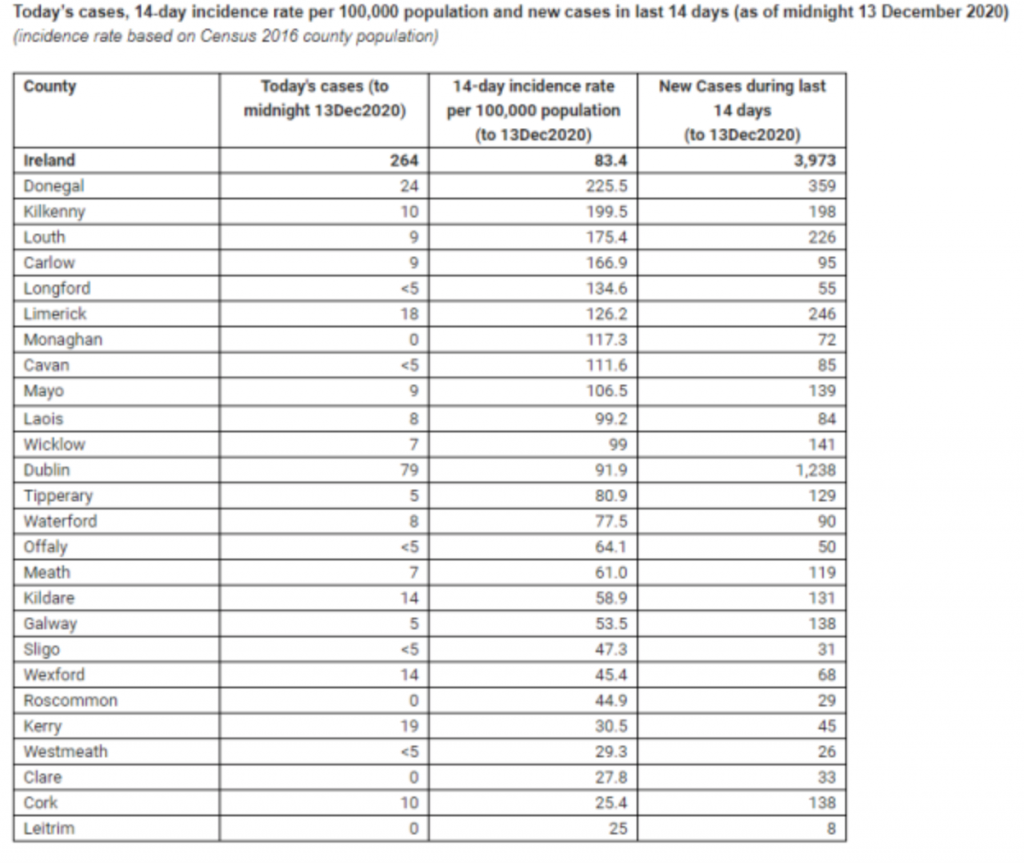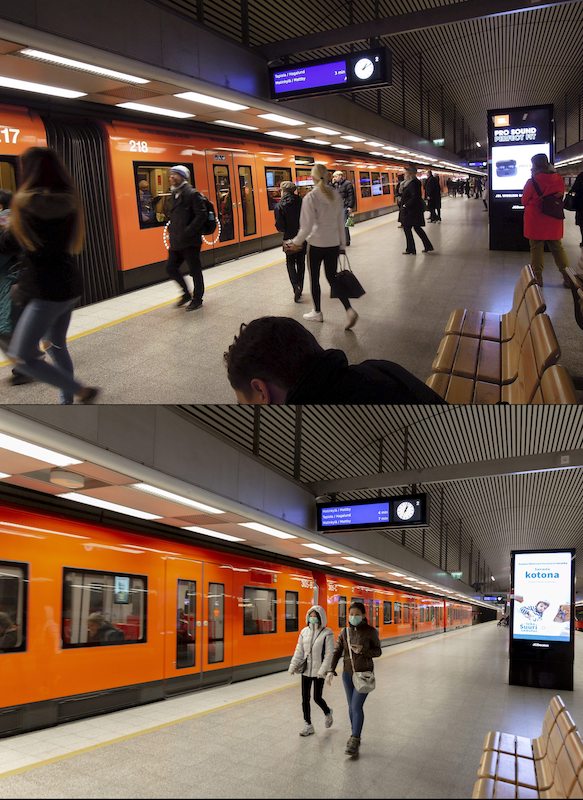How do Europeans feel about how their governments dealt with the pandemic? Governments have all tried to deal with the pandemic, and some countries have done it better than others.
Why are some countries doing far more exceptionally than others with regards to COVID-19? There are a multitude of factors, and one of the most vital ones is public opinion. It has been clear that the spread of the virus can be attributed to the complacency of people and their disregard for restrictions. Germany, Ireland, and Finland are all countries that have been impacted by the coronavirus. Furthermore, they all have different opinions on the virus and the restrictions put in place by their respective governments. These differing opinions are due to the disparate political, societal, and economic structures of the three countries. The burden of the virus on each country influenced their decisions on how to proceed with the pandemic.
Germany
Background:
First, a little background on the government and people of Germany. The country of Germany is classified as a federal parliamentary republic. The country is divided into 16 states, or Lander, with their own governments (World Factbook 2020). Germany also has a central government, composed of three branches (executive, legislative, and judicial). The east-west reunification in 1990 established this governmental system, creating one of the most successful economies in the world. If this is the case, how has COVID-19 impacted the political and societal spheres within the country? How do the 80 million people in Germany view this problem?

Public Opinion:
Germany has had struggles with the coronavirus. In the beginning, the country was praised for its adherence to science and its strong methods for lowering the spread, such as contact tracing, mass testing, and restrictions (Eddy 2020). Unfortunately, Germany has fallen flat lately, with the spread being higher than ever before. The Lander are tasked with the public health policy, but they have been reluctant to implement the restrictions made by the federal government (Eddy 2020). Recently, Chancellor Angela Merkel has ordered another lockdown heading into Christmas, as the virus continues to ravage the country (Eddy 2020). This is being put in place after the “lockdown light” initiative failed to lower the death rate and spread of the virus in November (Reuters 2020). These lockdowns and restrictions that have been in place for almost a year have frustrated the people of Germany, who want life to return to normal. Their frustration is reflected in the continued spread of the virus. Similar to the U.S., everyone figured this would be over in a couple of weeks, which is clearly not the case. This uncertainty of where the end is has built up a lot of tension in Germany today.
According to the European Policy Analysis, the public was far more in favor of the lockdown restriction in March and April, saying that they felt the societal needs outweighed the economic costs (Naumann et al 2020). The figure below displays this trend, with the y-axis ranging from 1 to 7. The lower the number means that people see the restrictions more negatively than positively, and vice versa as you go higher. It is clear that on the graph the positivity toward the restrictions decreases as they enter into May. It is safe to assume that the positivity towards these initiatives did not improve as we entered the summer and fall.

Source: Naumann et al 2020
The European Policy Analysis went further and showed the percentages of support for multiple lockdown policies. One that is particularly important is “Public Facilities”, which is displayed on Figure 3 in their analysis. Around 90% of people support the closure of public facilities in March when the virus first started. However, that quickly dropped to below 60% in the beginning of May (Naumann et al 2020). As with the figure above, we can assume that this downward trend continued into later months.
The lack of support for the virus restrictions has resulted in protests and demonstrations against the government. Towards the end of August, when trust for the government was still high, far-right extremists tried to storm the Reichstag in protest of these lockdown restrictions (Bennhold 2020). Many of the people protesting were affiliated with the AFD, or Alternative for Germany. This is a far-right group that claims the restrictions are infringing on their freedoms, which is akin to conservative views in America. In November, the AFD and other people had demonstrations against the “lockdown light” initiative, whose purpose was to increase certain restrictions to try and curb the spread. This initiative was met with outrage from the AFD, who claimed this was comparable to the 1933 Enabling Act, which helped Hitler rise to power (Reuters 2020). Today, the new lockdown is planned to go through Christmas and New Years and will end on January 10 (Eddy 2020).

Source: Schreiber 2020
Why do the people of Germany hold the coronavirus restrictions with contempt? It is hard to say for sure, but their dark history could be a possible explanation for this. As mentioned before, the AFD accused restrictions of being similar to Hitler’s rise of power. It is possible that the lack of trust and skepticism towards the government is due to the Third Reich. The Third Reich was the Nazi regime in Germany from 1933-1945, led by Adolf Hitler (Holocaust Encyclopedia, n.d.). Under this regime, a number of atrocities happened, such as the Holocaust. It all started when a fire in the Reichstag on February 28, 1933 allowed the government to enact a decree (Holocaust Encyclopedia, n.d.). This suspended the constitutional rights of the people and created a state of emergency, in which decrees could be put in place without permission from Parliament. This led to the Enabling Act of 1933, which granted Hitler permission to create any laws (even laws that violated the Weimar Constitution), without the consent of the government (Holocaust Encyclopedia, n.d.). These past events could be influencing the public opinions of the COVID-19 regulations.
Summary:
Overall, Germany has had and continues to have a tough time with the virus. Like the U.S., the people are tired of the restrictions and are showing complacency towards COVID-19 as a result. Far-right groups are continuing to protest the policies that are in place, claiming that they are stripping their freedoms and repeating history. Even though they are fairly small, they have a loud voice and are worsening the friction in Germany. Furthermore, many people in Germany are against the vaccine, protesting the idea of forced vaccination. Health Minister Jens Spahn said that vaccinations would not be forced in response to these protests (Reuters 2020). With a new lockdown in place and vaccines on the horizon, Germany seems to be heading in the right direction.
Ireland
BACKGROUND:
The Republic of Ireland is considered a constitutional republic with a parliamentary system of government. The parliamentary system consists of the Oireachtas, which is the bicameral national parliament, and it is composed of the President of Ireland and the two Houses of the Oireachtas: Seanad Éireann (Senate) and Dáil Éireann (House of Representatives).
PUBLIC OPINION:
The year 2020 has brought challenges to the world that we never thought we’d see. The coronavirus helped make 2020 a very tiring year all around the world causing people to form their own opinions about the pandemic. In October of 2020, the country of Ireland coronavirus cases started to rise as the second wave was on its way. In a poll that was given to the Irish citizens, 63 percent of Ireland’s citizens believed that the government should tighten restrictions for COVID-19 in order to curb the increasing number of cases (Cullen, 2020). While just a month prior, at the start of September, only 39 percent of people thought we needed additional restrictions (Aodha, 2020). This opinion poll had been released in Ireland a few times throughout the duration of the pandemic and for the first time, the people of Ireland believe that the government is trying to return to normality “a bit too quickly.” (Cullen, 2020) Overall, levels of fear, anger, and worry were rising in Ireland with tough circumstances surrounding the number of coronavirus cases increasing (Cullen, 2020).

According to the Amárach survey that Irish citizens were able to take to voice their opinions about the pandemic and how the government was handling it, it indicates that not only were there concerns about coronavirus increasing, but also ‘the health of friends and family’, and ‘health system being overloaded’ (Aodha, 2020). The government was not quick to take these considerations into account back in October and take more of a middle ground option, which was bringing the country to a Level 3 lockdown (Aodha, 2020). But, by the end of October after continuous rising numbers, according to Prime Minister Micheal Martin, Ireland was the first European country to return to a nationwide shutdown as COVID-19 cases rose again. This meant for Ireland that all nonessential retail businesses are ordered to close. Residents are expected to stay within about 3 miles of their homes, except for work and other essential activities and more than 150,000 people are expected to lose their jobs (Oxner, 2020).
With Ireland now easing out of their second lockdown, Monday, December 14th there were still 264 new cases and 2 deaths confirmed. This brings the death toll in Ireland from Covid-19 to 2,126, with a total of 76,449 confirmed cases of the virus since the pandemic began (Aodha, 2020). Irish officials recommend to their citizens it is still in their best interest to stay away from larger crowds as life transitions back to normalcy again (Murphy, 2020).

Figure 5: Graph shows the number of cases in the last 14 days as of December 13th, 2020 (Aodha, 2020)
SUMMARY:
The overall public opinion about the coronavirus in Ireland is clear. While it took a moment for a majority of citizens to feel as though there should be more restrictions as the number of cases continued to go up, the surveys that were taken made opinions clear. With Ireland’s strong democracy and moderately high political participation, citizens wanted to voice their opinions. The majority of Ireland’s citizens said that they should be more restrictive, and Irish officials were listening. The Republic of Ireland made a good call with another six-week lockdown for the country, but the coronavirus is not over.
Finland
Background
Finland is a parliamentary republic, with its executive leadership duties split amongst the Prime Minister and the President. The Finnish parliament is known as the eduskunta, and is made up of multiple parties that represent the people of Finland.
Public Opinion
The devastation brought about by the Coronavirus pandemic is undeniable as we globally its effects as case numbers around the world rise. Since September 2020 Finland has been in a second wave of coronavirus and has overall had little variation in the public opinion of their response to coronavirus. Surveys of the Finnish people have revealed that most citizens agree with the Finnish government’s response, as the government has been largely transparent in its protective actions. With no mandated lockdown and in its place, strict social distancing guidelines such as placing restrictions on travel, creating and implementing socially distanced education, and the formation of an easy to use smartphone app that helps the Finnish government with contact tracing. (Höppner, 2020)These measures have allowed the Finnish government to emphasize the importance of people’s rights and freedoms while using all available resources to keep people safe. When surveyed, 70% of people said they felt the response of the Finnish Government was appropriate, while 19% said the restrictions were not enough and they wanted more government intervention. (Niinimäki, 2020)

Summary
Finland is as is every country, susceptible to the havoc and loss coronavirus brings. The government of Finland has been transparent in its use of restrictions and thus has been able to effectively protect its citizens. Though the virus has been used by many governments to divide its populations and indulge corruption, Finland’s response has shown what’s possible in regards to government and people can do when cooperatively working towards a common goal.
Conclusion
All three countries have dealt with the pandemic in different ways. It is clear that the public is a large influencer with regards to restrictions and the spread of the virus. To end this global pandemic, people need to work together to slow down the spread, even if they are tired of the regulations. In the end, they are there to try and save lives. Going against them puts everyone at risk and elongates this dark period of our world history.
References
Aodha, Gráinne Ní. “Increasingly Worried, Supportive of Restrictions: What Opinion Poll Findings Tell Us about Ireland’s Perception of the Pandemic.” TheJournal.ie, 2020. https://www.thejournal.ie/irish-public-more-restrictions-5225096-Oct2020/.
Aodha, Gráinne Ní. “Coronavirus: Two Deaths and 264 New Cases Confirmed in Ireland.” TheJournal.ie, 2020. https://www.thejournal.ie/coronavirus-figures-deaths-cases-5299343-Dec2020/.
Bennhold, Katrin. 2020. “Far Right Germans Try to Storm Reichstag as Virus Protests Escalate.” The New York Times, August 31, 2020. https://www.nytimes.com/2020/08/31/world/europe/reichstag-germany-neonazi-coronavirus.html
Cullen, Paul. “Coronavirus: Two-Thirds of Public Want Tougher Restrictions.” The Irish Times. The Irish Times, October 7, 2020. https://www.irishtimes.com/news/health/coronavirus-two-thirds-of-public-want-tougher-restrictions-1.4373881.
Eddy, Melissa. 2020. “Germany Locks Down Ahead of Christmas as Coronavirus Deaths Rise.” The New York Times, December 13, 2020. https://www.nytimes.com/2020/12/13/world/europe/germany-locks-down-ahead-of-christmas-as-coronavirus-deaths-rise.html
Höppner, S. (2020, September 19). Why is Finland coping so well with the coronavirus crisis?: DW: 19.11.2020. Retrieved December 15, 2020, from https://www.dw.com/en/coronavirus-finland-sweden-role-model/a-55664117
Murphy, Greg. “Ireland Eases out of Second Lockdown, but CMO Warns to ‘Stay Away from Crowds’ .” Irish Examiner, December 1, 2020. https://www.irishexaminer.com/news/arid-40110965.html.
Naumann, Elias, Möhring, Katja, Reifenscheid, Maximiliane, Wenz, Alexander, Rettig, Tobias, Lehrer, Roni, Krieger, Ulrich, Juhl, Sebastian, Friedel, Sabine, Fikel, Marina, Cornesse, Carina and Blom, Annelies G. 2020. “COVID‐19 policies in Germany and their social, political, and psychological consequences.” European Policy Analysis, September 28, 2020. https://onlinelibrary.wiley.com/doi/10.1002/epa2.1091
Niinimäki, E. (2020, June 02). Finland: Government’s restrictions to curb COVID-19. Retrieved December 15, 2020, from https://www.statista.com/statistics/1109734/opinions-of-the-governments-restrictions-to-curb-coronavirus-outbreak-in-finland/
Oxner, Reese. “Ireland To Impose 6-Week National Lockdown, Estimates 150,000 Job Losses.” NPR. NPR, October 20, 2020. https://www.npr.org/sections/coronavirus-live-updates/2020/10/20/925811935/ireland-to-impose-six-week-national-lockdown-estimates-150-000-job-losses.
Reuters Staff. 2020. “German police clash with protesters angry at Merkel’s coronavirus law.” Reuters, November 18, 2020. https://www.reuters.com/article/us-health-coronavirus-germany-protests-idUSKBN27Y15V
Schreiber, Marcus. “Thousands of protesters at Brandenburg Gate.” Digital Image. Associated Press. August 1, 2020. Accessed December 20, 2020. https://apnews.com/article/international-news-health-berlin-germany-pandemics-ef70c1af702b89c23e71fcd843e63293/gallery/bcb7cf58d178449ca9ffefae0f7f641d
Smith, A. O. (2020, April 12). In pictures: Photos of Helsinki landmarks before and after coronavirus outbreak. Retrieved December 21, 2020, from https://www.helsinkitimes.fi/finland/news-in-brief/17542-in-pictures-photos-of-helsinki-landmarks-before-and-after-coronavirus-outbreak.html
United States Holocaust Memorial Museum. n.d. “The Enabling Act.” Holocaust Encyclopedia. Accessed December 20, 2020. https://encyclopedia.ushmm.org/content/en/article/the-enabling-act
United States Holocaust Memorial Museum. n.d. “Third Reich: An Overview.” Holocaust Encyclopedia. Accessed December 20, 2020. https://encyclopedia.ushmm.org/content/en/article/third-reich-an-overview
The World Factbook. 2020. “Europe: Germany.” Last modified November 24, 2020. https://www.cia.gov/library/publications/the-world-factbook/geos/gm.html
Contributors
Teddy Esposito is a Geography major with an expected graduation date of Spring 2022.
Taylor Grabow is a junior at SUNY Geneseo who is currently a Communication major with a business studies minor and is planning to graduate in 2022.
Victoria Creviston is a junior at SUNY Geneseo who is a Political Science major and is planning to graduate in 2023.
